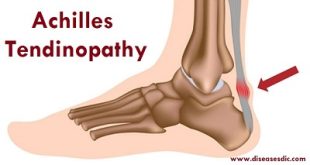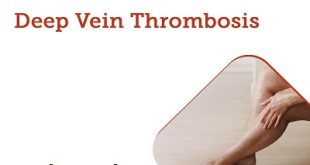Overview
Acute coronary syndrome is a term used to describe a range of conditions associated with sudden, reduced blood flow to the heart. One such condition is a heart attack (myocardial infarction) — when cell death results in damaged or destroyed heart tissue. Even when acute coronary syndrome causes no cell death, the reduced blood flow changes how your heart works and is a sign of a high risk of heart attack. Acute coronary syndrome often causes severe chest pain or discomfort. It is a medical emergency that requires prompt diagnosis and care. The goals of treatment include improving blood flow, treating complications and preventing future problems.
What types of heart conditions does ACS include?
Acute coronary syndrome involves three types of coronary artery disease that damage or destroy heart tissue. The specific type depends on:
- Where blood flow to your heart is blocked.
- How long the blockage lasts.
- The amount of damage it causes.
Types of ACS are:
- Unstable angina: This involves sudden, unexpected chest pain or pressure, even while resting. It’s a warning sign of a heart attack and occurs when stable angina worsens.
- Non-ST-elevation myocardial infarction: An NSTEMI is a heart attack that providers can detect with blood tests but not with an electrocardiogram (EKG). It means your coronary arteries aren’t fully blocked or were blocked for a short amount of time.
- ST-elevation myocardial infarction: A STEMI is a much more severe heart attack that providers can detect with blood tests and EKG. It occurs when blood flow to your heart is fully blocked for a long time, affecting a large part of your heart.
Pathophysiology of Acute Coronary Syndromes
Initial consequences vary with size, location, and duration of obstruction and range from transient ischemia to infarction. Measurement of newer, more sensitive markers indicates that some cell necrosis probably occurs even in mild forms; thus, ischemic events occur on a continuum, and classification into subgroups, although useful, is somewhat arbitrary. Sequelae of the acute event depend primarily on the mass and type of cardiac tissue infarcted.
Myocardial dysfunction
Ischemic (but not infarcted) tissue has impaired contractility and relaxation, resulting in hypokinetic or akinetic segments; these segments may expand or bulge during systole (called paradoxical motion). The size of the affected area determines effects, which range from minimal to mild heart failure to cardiogenic shock; usually, large parts of myocardium must be ischemic to cause significant myocardial dysfunction. Some degree of heart failure occurs in about two thirds of hospitalized patients with acute myocardial infarction. It is termed ischemic cardiomyopathy if low cardiac output and heart failure persist. Ischemia involving the papillary muscle may lead to mitral valve regurgitation. Dysfunctional wall motion can allow mural thrombus formation.
Myocardial infarction (MI)
Myocardial infarction is myocardial necrosis resulting from abrupt reduction in coronary blood flow to part of the myocardium. Infarcted tissue is permanently dysfunctional; however, there is a zone of potentially reversible ischemia adjacent to infarcted tissue. MI affects predominantly the left ventricle (LV), but damage may extend into the right ventricle (RV) or the atria.
Infarction may be
Transmural: Transmural infarcts involve the whole thickness of myocardium from epicardium to endocardium and are usually characterized by abnormal Q waves on ECG.
Nontransmural (subendocardial): Nontransmural infarcts do not extend through the ventricular wall and cause only ST-segment and T-wave (ST-T) abnormalities.
Because the transmural depth of necrosis cannot be precisely determined clinically, infarcts are usually classified as STEMI or NSTEMI by the presence or absence of ST-segment elevation or Q waves on the ECG.
Necrosis of a significant portion of the interventricular septum or ventricular wall may rupture, with dire consequences. A ventricular aneurysm or pseudoaneurysm may form.
Electrical dysfunction
Electrical dysfunction can be significant in any form of acute coronary syndrome. Ischemic and necrotic cells are incapable of normal electrical activity, resulting in various ECG changes (predominantly ST-T abnormalities), arrhythmias, and conduction disturbances. ST-T abnormalities of ischemia include ST-segment depression (often downsloping from the J point), T-wave inversion, ST-segment elevation (often referred to as injury current), and peaked T waves in the hyperacute phase of infarction. Conduction disturbances can reflect damage to the sinus node, the atrioventricular (AV) node, or specialized conduction tissues. Most changes are transient; some are permanent.
Causes
A fatty substance called plaque can build up in the arteries that bring oxygen-rich blood to your heart. Plaque is made up of cholesterol, fat, cells, and other substances.
Plaque can block blood flow in two ways:
- It can cause an artery to become so narrow over time that it becomes blocked enough to cause symptoms.
- The plaque tears suddenly and a blood clot forms around it, severely narrowing or blocking the artery.
Risk factors of Acute Coronary Syndrome
There are certain risk factors associated with acute coronary syndrome that people should be aware of. Risk factors include:
- Older age – men of 45 years or older, women aged 55 years or older
- High blood pressure or cholesterol
- Smoking
- Lack of physical activity
- Unhealthy diet, obesity, or overweight
- Diabetes
- Family history
What are the symptoms?
Chest pain or discomfort may immediately signal that something’s wrong with your heart. But other symptoms may leave you unsure of what’s wrong. Take note of these common signs of an acute coronary syndrome:
- Chest pain or discomfort, which may involve pressure, tightness or fullness
- Pain or discomfort in one or both arms, the jaw, neck, back or stomach
- Shortness of breath
- Feeling dizzy or lightheaded
- Nausea
- Sweating
Take these symptoms seriously. If you experience chest pain or other symptoms, don’t hesitate to call your physician immediately.
Chest pain caused by acute coronary syndromes can come on suddenly, as is the case with a heart attack. Other times, the pain can be unpredictable or get worse even with rest – both hallmark symptoms of unstable angina. People who experience chronic chest pain resulting from decreased blood flow to the heart due to years of cholesterol buildup in their arteries can develop an acute coronary syndrome if a blood clot forms on top of the plaque buildup.
Possible Complications of Acute Coronary Syndrome
In some cases, ACS can lead to other health problems including:
- Abnormal heart rhythms
- Death
- Heart attack
- Heart failure, which happens when the heart cannot pump enough blood
- Rupture of part of the heart muscle causing tamponade or severe valve leakage
- Stroke
Exams and Tests
Your health care provider will do an exam, listen to your chest with a stethoscope, and ask about your medical history.
Tests for ACS include:
- Electrocardiogram (ECG) — An ECG is usually the first test your doctor will run. It measures your heart’s electrical activity. During the test, you will have small pads taped to your chest and other areas of your body.
- Blood test — Some blood tests help show the cause of chest pain and see if you are at a high risk for a heart attack. A troponin blood test can show if the cells in your heart have been damaged. This test can confirm you are having a heart attack.
- Echocardiogram – This test uses sound waves to look at your heart. It shows if your heart has been damaged and can find some types of heart problems.
Coronary angiography may be done right away or when you are more stable. This test:
- Uses a special dye and x-rays to see how blood flows through your heart
- Can help your provider decide which treatments you need next
Other tests to look at your heart that may be done while you are in the hospital include:
- Exercise stress test
- Nuclear stress test
- Stress echocardiography
How is Acute Coronary Syndrome Treated?
The treatment focus for ACS is determining the underlying cause of the symptoms and ending the medical emergency. This means increasing blood flow to the heart, which should also reduce the pain associated with blockage. These steps may include:
Surgery
- Angioplasty: Angioplasty is an invasive technique in which a catheter is inserted inside the blocked artery and then expanded with a balloon. A stent or mesh tube is then placed in the same location, to ensure that the vessel remains open when the catheter and balloon are withdrawn.
- Bypass surgery: Bypass surgery involves the grafting of an unblocked segment of artery onto the heart, as an alternative passageway for blood flow. The new segment is harvested from another location in the body, typically in the arms or legs.
Medications
- ACE inhibitors: ACE is short for angiotensin-converting enzymes. ACE inhibitors are medications that increase blood flow by expanding vessel walls.
- Angiotensin receptor blockers: Also called ARBs, angiotensin receptor blockers counteract hypertension.
- Antiplatelet drugs: Antiplatelet drugs decrease blood-clot formation. Aspirin is an antiplatelet drug.
- Beta blockers: Beta blockers slow down heart function, which reduces the demands it places on the circulatory system.
- Nitroglycerin: Nitroglycerin is a traditional anti-heart attack medication. It opens blood vessels, increases blood flow, and suppresses angina (chest pain).
- Thrombolytics: Thrombolytics dissolve blood clots.
- Statins: Statins are an anti-cholesterol medication. Controlling bloodstream cholesterol is important because it is one of the constituent elements in plaque, along with fats and calcium. There is also evidence that statins help stabilize the plaque deposits that have already formed.
It is possible to reduce your risk of developing an ACS condition by:
- Adopting a heart-healthy (low fat, lean protein) diet
- Exercising and staying physically active
- Managing cholesterol, blood pressure, and glucose levels
- Losing weight, if you’re over the recommended range for your height and build
- Lowering stress by means other than alcohol consumption
- Stopping the use of all tobacco products, especially cigarettes
Prevention of Acute Coronary Syndrome
There is a lot you can do to help prevent ACS.
- Eat a heart-healthy diet. Have plenty of fruits, veggies, whole grains, and lean meats. Try to limit foods high in cholesterol and saturated fats, since too much of these substances can clog your arteries.
- Get exercise. Aim to get at least 30 minutes of moderate exercise most days of the week.
- Lose weight, if you are overweight.
- Quit smoking. Smoking can damage your heart. Ask your doctor if you need help quitting.
- Get preventive health screenings. You should see your doctor for regular cholesterol and blood pressure tests and learn how to keep your numbers in check.
- Manage health conditions, such as high blood pressure, high cholesterol, or diabetes.
 Diseases Treatments Dictionary This is complete solution to read all diseases treatments Which covers Prevention, Causes, Symptoms, Medical Terms, Drugs, Prescription, Natural Remedies with cures and Treatments. Most of the common diseases were listed in names, split with categories.
Diseases Treatments Dictionary This is complete solution to read all diseases treatments Which covers Prevention, Causes, Symptoms, Medical Terms, Drugs, Prescription, Natural Remedies with cures and Treatments. Most of the common diseases were listed in names, split with categories.








very good ? app I lost my husband five months ago. if I have this app I would have known something about it.